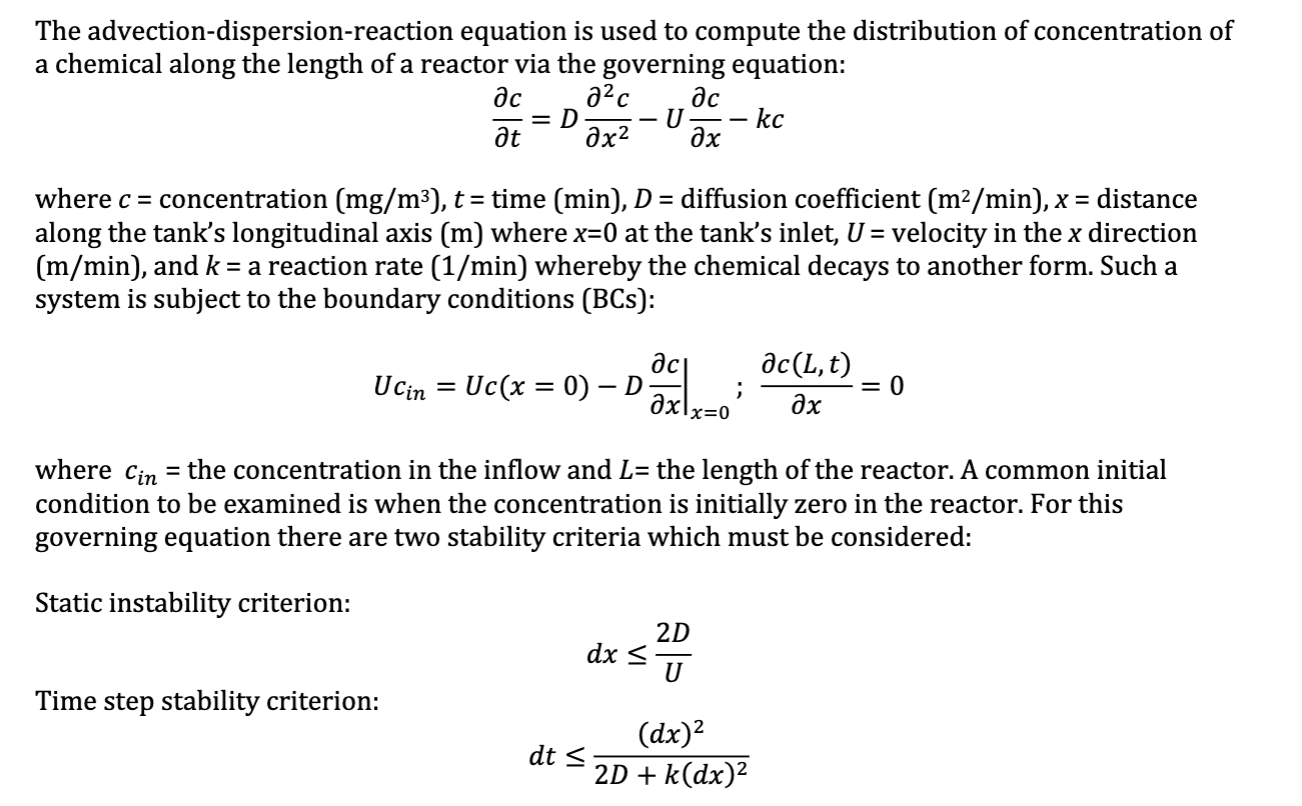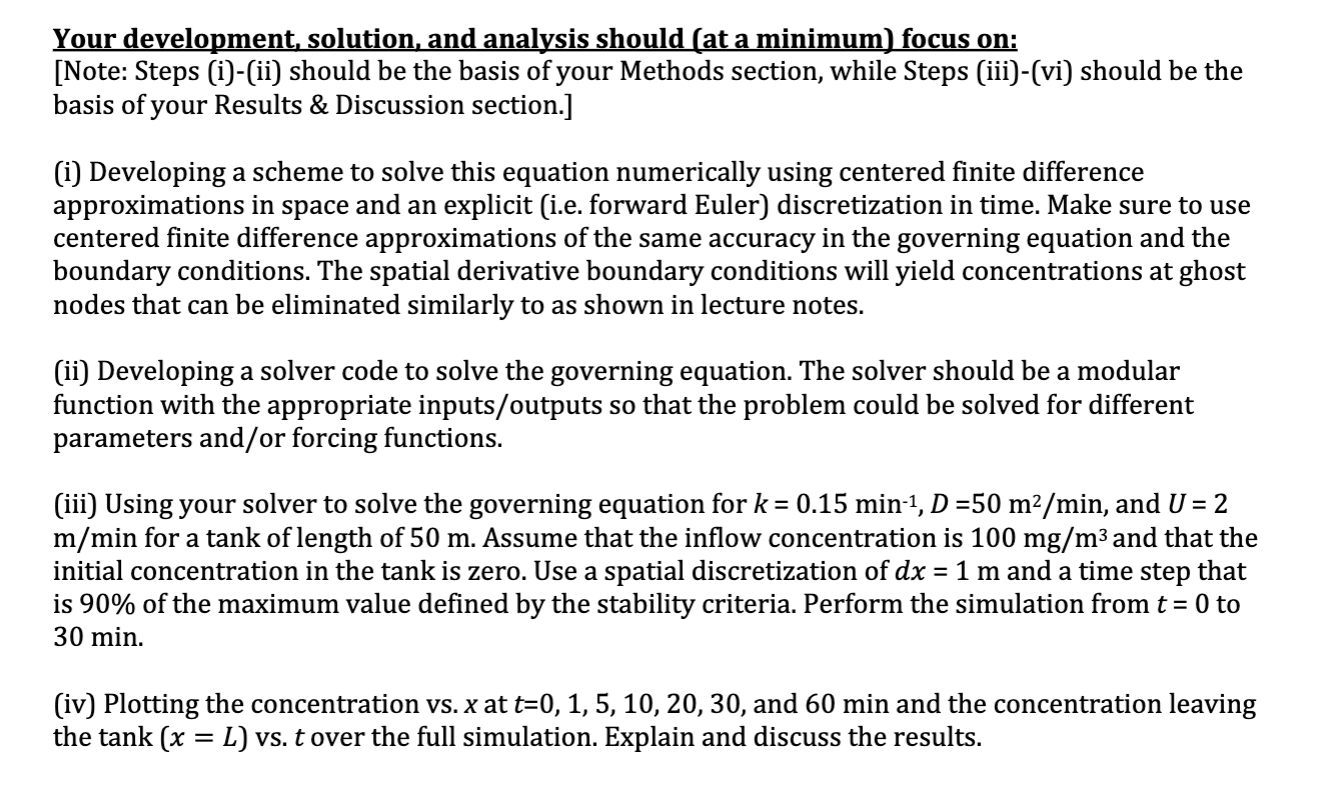Home /
Expert Answers /
Civil Engineering /
the-advection-dispersion-reaction-equation-is-used-to-compute-the-distribution-of-concentration-of-pa857
(Solved): The advection-dispersion-reaction equation is used to compute the distribution of concentration of ...


The advection-dispersion-reaction equation is used to compute the distribution of concentration of a chemical along the length of a reactor via the governing equation: where concentration time diffusion coefficient distance along the tank's longitudinal axis (m) where at the tank's inlet, velocity in the direction , and a reaction rate whereby the chemical decays to another form. Such a system is subject to the boundary conditions (BCs): where the concentration in the inflow and the length of the reactor. A common initial condition to be examined is when the concentration is initially zero in the reactor. For this governing equation there are two stability criteria which must be considered: Static instability criterion: Time step stability criterion:
Your development, solution, and analysis should (at a minimum) focus on: [Note: Steps (i)-(ii) should be the basis of your Methods section, while Steps (iii)-(vi) should be the basis of your Results \& Discussion section.] (i) Developing a scheme to solve this equation numerically using centered finite difference approximations in space and an explicit (i.e. forward Euler) discretization in time. Make sure to use centered finite difference approximations of the same accuracy in the governing equation and the boundary conditions. The spatial derivative boundary conditions will yield concentrations at ghost nodes that can be eliminated similarly to as shown in lecture notes. (ii) Developing a solver code to solve the governing equation. The solver should be a modular function with the appropriate inputs/outputs so that the problem could be solved for different parameters and/or forcing functions. (iii) Using your solver to solve the governing equation for , and for a tank of length of . Assume that the inflow concentration is and that the initial concentration in the tank is zero. Use a spatial discretization of and a time step that is of the maximum value defined by the stability criteria. Perform the simulation from to . (iv) Plotting the concentration vs. at , and and the concentration leaving the tank vs. over the full simulation. Explain and discuss the results.
Expert Answer
To solve the advection-dispersion-reaction equation numerically, we'll use centered finite differenc...